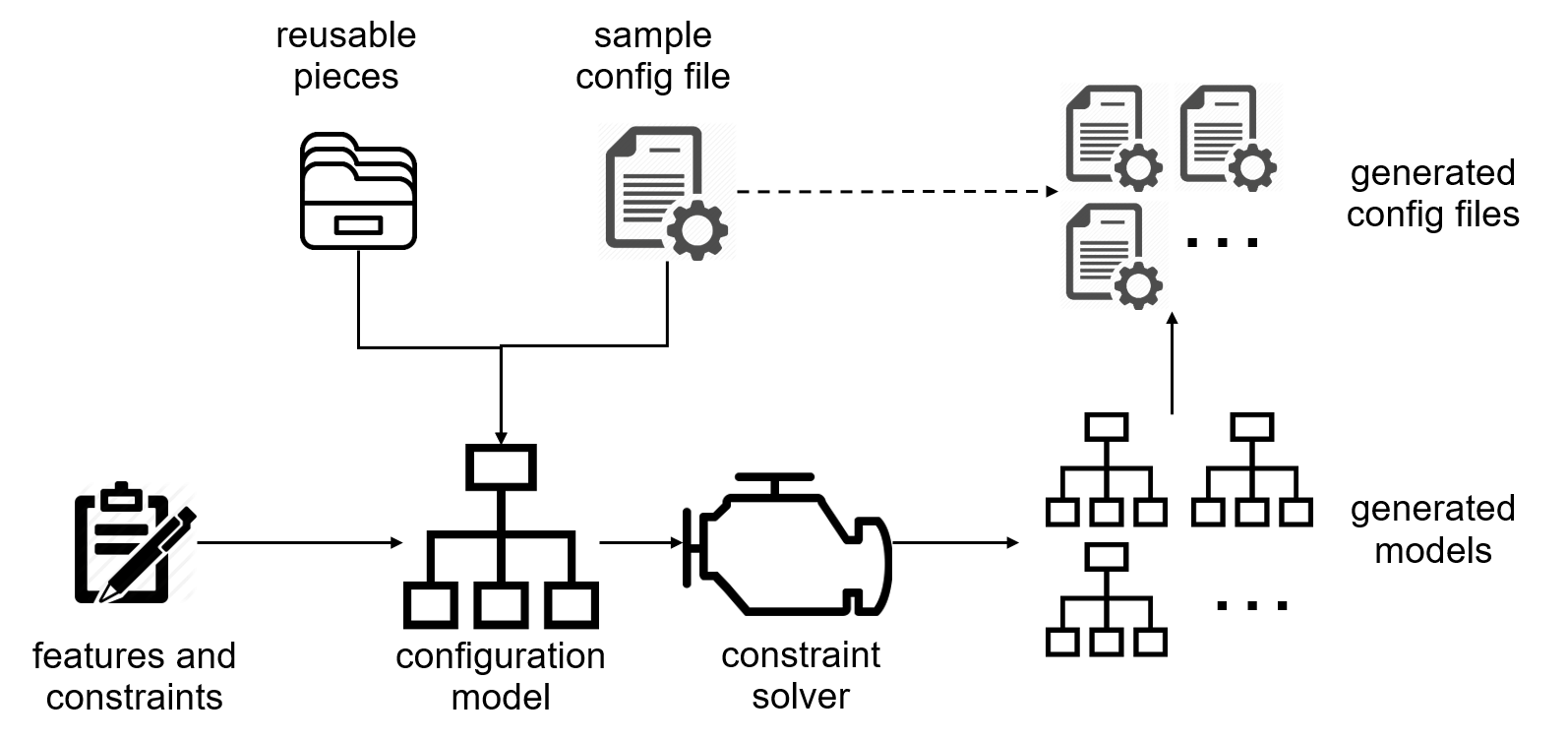CAMP
Amplify your testing with more configurations!
What is CAMP?
CAMP (Configuration AMPlification) takes as input a sample testing configuration and generates automatically a number of diverse configurations. The generation is guided by predefined features and constraints, and utilizes a set of reusable pieces. The current version of CAMP is focused on the Docker environment, and the input and output configurations are specified as Dockerfiles or docker-compose files.
If you try CAMP, feel free to:
-
Ask questions on our mailing list;
-
Post issues or features requests on the issue tracker.
Quick start
The fastest solution is to use docker to run CAMP and all its dependencies in one container, using the following command:
fchauvel@debian$ docker run --name camp \
-it \
-v /var/run/docker.sock:/var/run/docker.sock \
-t fchauvel/camp:latest bash
root@9dd7e1f061ce:/camp# cd samples/java
root@9dd7e1f061ce:/camp# camp generate -d .
The Docker image include all samples available on Github.
Here are the three main CAMP commands:
camp generate ...to generate alternative test configurations from a seedscamp realize ...to concretize variables into these test configurationscamp execute ...to run some of these new test configurations
CAMP Inputs
CAMP requires two inputs:
-
The CAMP Model, which is a YAML file that describes the pieces that can vary in the orchestrations. These may be service providers, feature providers, version or other numerical configurations.
-
A template orchestration that illustrates how the components listed in the CAMP model are bound and configured together. So far, CAMP only supports the Docker technologies and the orchestration must be a docker-compose file.
From there, CAMP will generate, realize and execute alternative configurations, each with alternative variations.
Examples
In the samples directory of the repository, there are two examples, XWiki and CityGo.
-
In XWiki, we have set up CAMP to test XWiki, a wiki platform to facilitate collaborative process inside any organization. XWiki can be set up in various environments and various configurations. CAMP provides means to capture this variations and generate those different environments and configurations. CAMP also facilitates testing against those generated configurations.
-
In CityGo, CAMP is set up against the CityGo application by ATOS. CityGo can be set up in various environments and configurations. In this example, we demonstrate how CAMP can vary not just elements which map to docker images and services, but also arbitrary parameters and commands in docker files.
How does CAMP work?
CAMP extracts from the input Docker specifications an abstract
configuration model, and tries to synthesize new models based on the
features, variables and constraints. The figure below illustrates the
approach:  The
new models will then be translated back into Docker
specifications. These specifications can be executed in the same way
as the original input, and therefore to replace the original testing
configuration during either the manual testing or in a continuous
integration pipeline.
The
new models will then be translated back into Docker
specifications. These specifications can be executed in the same way
as the original input, and therefore to replace the original testing
configuration during either the manual testing or in a continuous
integration pipeline.
